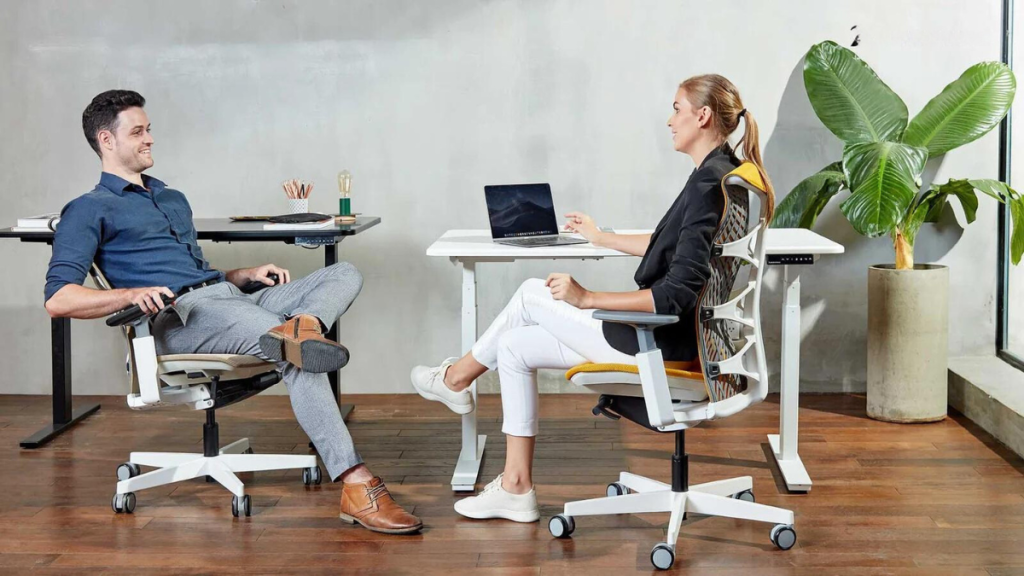Introduction
Most work is conducted from a seated position in the modern workplace. The significance of an ergonomic chair should not be underestimated. According to a study published in the Journal of Physical Therapy Science, ergonomic chairs can significantly reduce musculoskeletal pain. But what exactly makes a chair ergonomic? This guide aims to demystify the term and delve into the essential features contributing to an ergonomic seating experience.
Adjustability: The Pinnacle of Ergonomic Design
The cornerstone of an ergonomic chair lies in its adaptability, allowing for tailored comfort and support. According to a Journal of Physical Therapy Science study, chairs with adjustable lumbar support can significantly mitigate lower back pain. Height adjustability is not just a luxury but a necessity; it aligns your eyes with your computer screen and ensures your feet are flat on the floor, reducing the risk of neck pain. Ergonomic experts also emphasize the importance of adjustable armrests, which can pivot and move vertically to alleviate shoulder and arm strain. A study in the Ergonomics Journal further substantiates that chairs with reclining features can decrease the risk of developing musculoskeletal disorders, making adjustability a non-negotiable feature for long-term health and comfort.
Lumbar Support: The Backbone of Comfort
Adequate lumbar support is non-negotiable in an ergonomic chair. The chair should support the natural curve of your spine, reducing the risk of lower back pain, as confirmed by Spine-health. Consequently, lumbar support material should be firm and cushioned for optimal comfort and durability.
Seat Depth and Width: Tailored to You
The seat should be deep and wide enough to fully support your hips and thighs. Some ergonomic chairs offer adjustable seat depth, allowing for a more customized fit.
Recline Functionality: A Dynamic Posture
A chair that reclines offers the benefit of shifting your position throughout the day, which is essential for spinal health. The recline tension should be adjustable to suit your weight and preference.
Material and Breathability: Comfort Meets Practicality
An ergonomic chair should be made of breathable material to prevent heat buildup. Mesh backrests or cushioned seats with breathable fabric are popular choices. In addition to being breathable, the material should be easy to clean, especially if you spend long hours in the chair.
Swivel and Mobility: Freedom to Move
An ergonomic chair should easily swivel and move, allowing you to reach different workspace areas without straining. Opt for high-quality caster wheels that glide smoothly on various surfaces and don’t wear out quickly when possible.
Durability and Warranty: A Long-Term Investment
Getting the best office chair for long hours is an investment in your health and productivity. Therefore, it should be durable and come with a robust warranty. Brands like Herman Miller offer up to 12 years of warranty, ensuring long-term reliability.
Conclusion: The Sum of Its Parts
A single feature does not define an ergonomic chair but is the sum of its adjustable, supportive, and durable parts. Investing in such a chair is investing in your well-being, ensuring that you can work comfortably and, consequently, be more productive.




